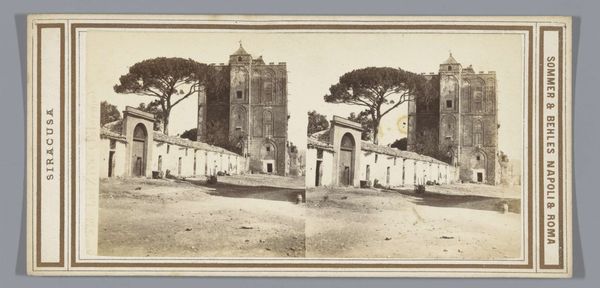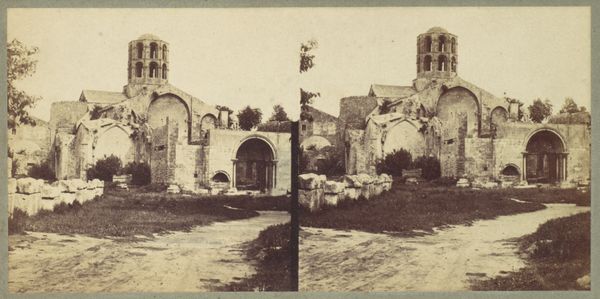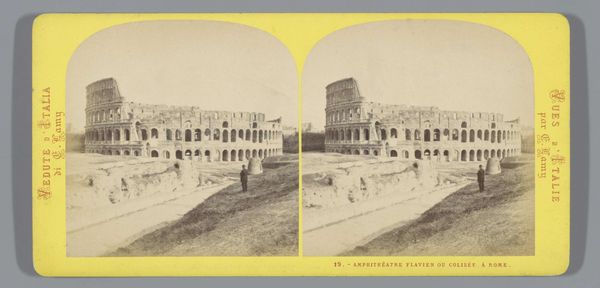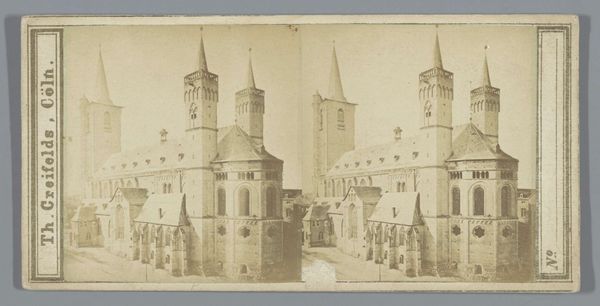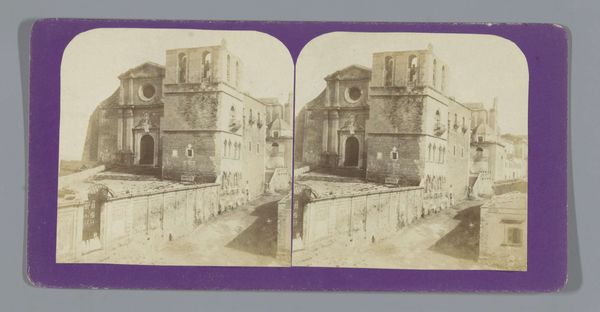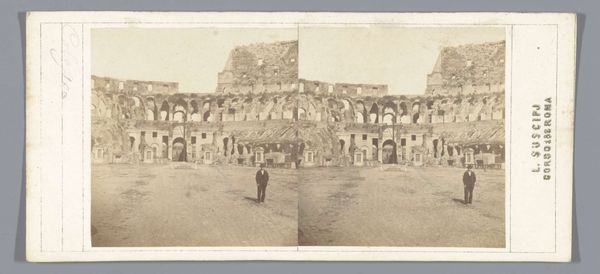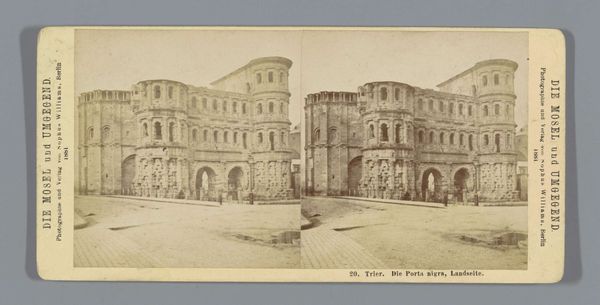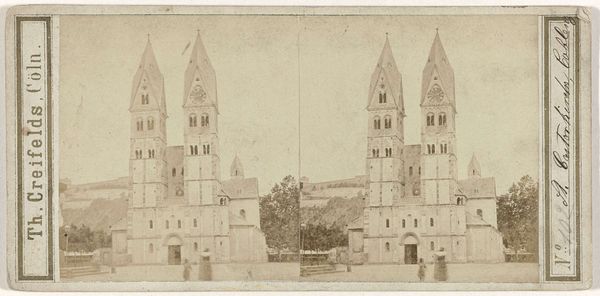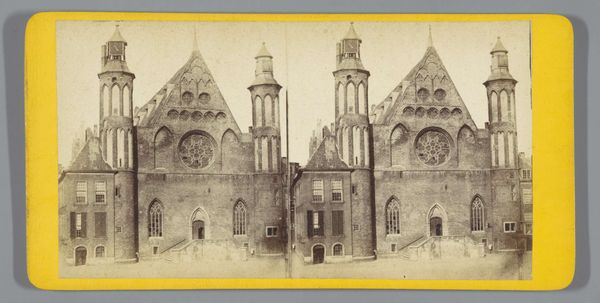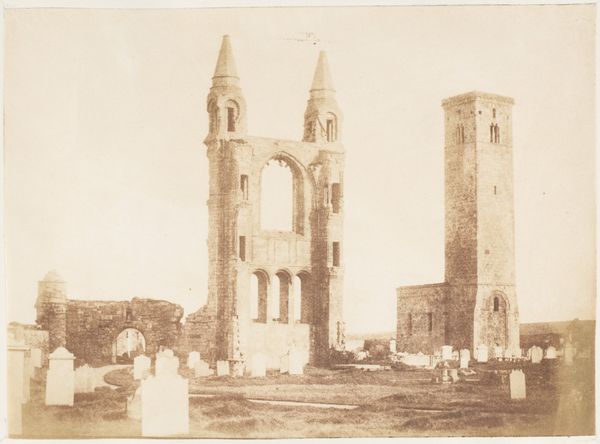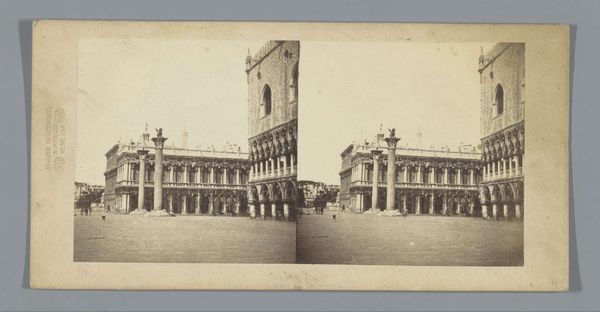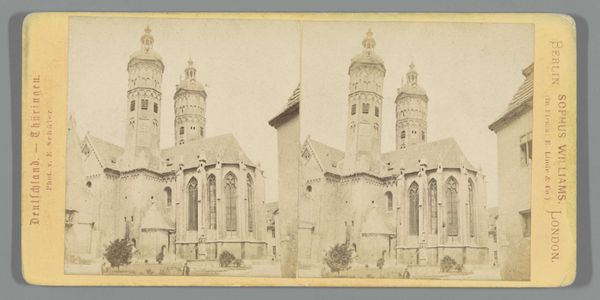
Dimensions: height 85 mm, width 170 mm
Copyright: Rijks Museum: Open Domain
Editor: This gelatin-silver print, "Exterieur van de Sint-Gereonskerk te Keulen," taken by Anselm Schmitz around the 1860s-1870s, really captures the monumentality of the church. The light is diffused and gives it a soft, almost dreamlike quality. What historical context can you provide to help us understand this cityscape better? Curator: Well, consider the power of institutions at that time. The romanticism in the photography reflects a deep nostalgia for the medieval past and a rise in nationalist sentiments. This image wasn't just documentation; it's also about shaping a visual narrative, about reinforcing ideas of cultural heritage through its presentation in galleries. How does framing this within Romanticism alter your first reaction? Editor: I suppose that makes the monumentality less about objective reality and more about fostering a sense of national pride. I initially saw a straightforward cityscape. Curator: Exactly. Furthermore, the distribution method matters too! As it was often circulated as a stereo card it turns private contemplation into a national monument everyone now has access to in their own home. How does considering these images as mass-produced affect the experience? Editor: That it takes the location depicted and transforms it from local pride to a universal ideal. This image’s public accessibility transforms into part of constructing a common national narrative. It becomes part of constructing common national narratives. Thanks for expanding my understanding! Curator: And thinking about that circulation reveals much about photography’s evolving role within larger society.
Comments
No comments
Be the first to comment and join the conversation on the ultimate creative platform.
